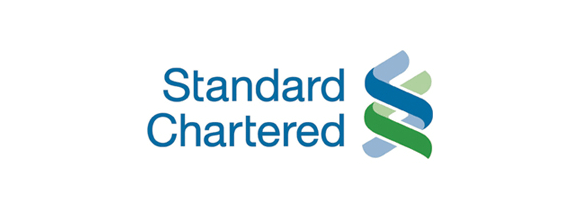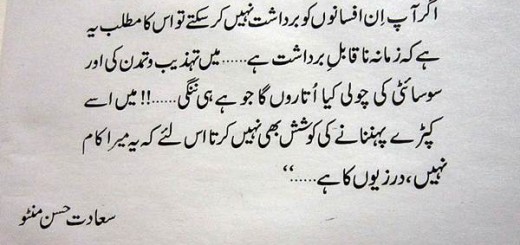An Analysis Of The Communication Process At Standard Chartered Bank, Pakistan

standard chartered communications report
An Analysis Of The Communication Process At Standard Chartered Bank, Pakistan
TERM REPORT FOR BUSINESS COMMUNICATION
TABLE OF CONTENTS
| SECTIONS | CONTENTS OF THE REPORT | PAGE # |
| Executive Summary | iv | |
| 1
1.1 1.2 1.3 1.4 1.5 1.6 |
Introduction
Authorization Problem / Purpose Scope Sources and Methods Definitions Limitations |
1
1 1 2 2 2 3 |
| 2 | Standard Chartered Bank | 3 |
| 3
3.1 3.11 3.12 3.13 3.2 3.21 3.22 3.23 3.24 3.25 3.3 |
Formal Communication Channels
Internal Communication Upward Direction Downward Direction Horizontal Direction External Communication Existing and Prospective Customers NBFI’s and DFI’s Regulatory Bodies General Public Brokers Other Communication Channels |
4
5 6 10 13 14 15 17 18 20 21 22 |
| 4 | Informational Communication Channels | 22 |
| 5 | Summary | 23 |
| 6 | Conclusion | 24 |
| 7 | Recommendations | 24 |
| 8 | Appendix A- Organizational Chart | A1 |
EXECUTIVE SUMMARY
Standard Chartered Bank is one of the oldest functioning foreign banks in Pakistan. Its history in the sub-continent dates back to as far as 1863. Presently, Standard Chartered Bank has four branches in Pakistan with an approximately 430-employee work force. The communication process at Standard Chartered Bank is complex, yet it follows the accepted rituals of communication in any top-rated bank: it is fast, accurate, standardized and is very sensitive to the legal language. In order to react instantaneously to the market consideration, one of the main tools used at the bank which can directly affect its profitability is the communication process.
The communication process at Standard Chartered Bank can be divided into two broad categories: formal and informal. Formal communication can be subdivided into internal and external. Each of these can be further subdivided to determine the mediums employed. Some of the mediums are telephone, intercoms, newspapers, magazines, faxes, electronic mail, group meetings, workshops and conferences.
External communication cannot be adequately fulfilled without a strong internal communication system. The bank is always in constant touch with present and prospective clients, NDFI’s and DFI’s, regulatory bodies, brokers and general public. Grapevine is another communication channel which has been effectively used by the employees to pick up tips about the company’s and market’s condition and environment. Contrary to what is found in most American textbooks, Standard Chartered Bank does not follow a very personalized, ‘you’ attitude with its customers, yet it has maintained its market share. That is why the communication process at Standard Chartered Bank is very unique and intriguing.
1 INTRODUCTION
Communication is the life blood of any organization. It is the determinant of the overall performance of any organization. We have formulated this report to highlight the importance and effectiveness of the communication process in the field of banking. Banking is dependent upon an extensive communication network; a good process is the only difference between making profits and sustaining a loss. We chose Standard Chartered Bank because it is one of the leaders in this field. The bank is rated very highly in Pakistan and is famous for its superb customer service.
1.1 AUTHORIZATION
This report is part of the Business Communication course and it studies the communication process as applied by banks. This study is very imperative for the proper coverage of this course. This report was authorized by Mr. Humayun Ansari, the Course Instructor for Business Communication for BBA IV (Fall Semester), 1996. This report has been prepared by Wasif Islam Raza and Salim Hemani, who are the students of this course for the Fall Semester.
1.2 PROBLEM / PURPOSE
The purpose of this report is to study and analyze the communication process at Standard Chartered Bank and to make recommendations for its improvement.
1.3 SCOPE
The report is descriptive and tries to have an in-depth analysis of the communication process followed at Standard Chartered Bank. It analyzed the channels and mediums of communication, as well as its effect on the morale of the employees.
1.4 SOURCES AND METHODS
The history of Standard Chartered Bank was obtained from the main office at I.I.Chundrigar Road. In the making of this report, an interview was conducted with Mr. Mirza Husnain Ali Baig- an Officer of the Human Resource Department of the bank. We also exchanged views with Mr. Inshan Ali Nawaz, an Assistant Manager of the Trade Services Department of the bank. Ms. Tania Saeed, a newly appointed Communication Officer, provided us with an in-depth knowledge of the communication process employed at Standard Chartered Bank.
We were also given the opportunity to analyze some of the documents which are normally in circulation at the bank.
1.5 DEFINITIONS
The following acronyms have been used in the text of this report:
NBFI’s: Non-Banking Financial Institutions.
DFI’s: Development Financial Institutions.
OMO: Open Market Operations i.e. buying and selling of government securities in the open market.
CDR: Credit Deposit Ratio
CEP: Chief Executive of Pakistan.
DCIT: Deputy Commissioner of Income Tax.
1.6 LIMITATIONS:
Time was one of the main constraint in doing this report. Although a proper in-depth analysis requires a time period of two to three months, this report was completed in a period of three to four weeks.
Another limitation was the confidentiality of certain written materials which would have supplemented our knowledge and understanding of the communication process. Access to analyze these documents was denied.
2 STANDARD CHARTERED BANK
Standard Chartered Bank is one of the oldest functioning foreign banks in Pakistan. It started as an agency office in Karachi in 1863. At that time, it was known by the name of Chartered Bank of India Australia. In 1868, it closed down its operations. In 1906, Chartered Bank of India Australia in China opened a branch in Karachi which is still operating at I.I.Chundrigar Road, Karachi. In 1969, Standard Bank and Chartered Bank of India Australia merged their operations in Pakistan. At that time it was known as Chartered Bank. In 1985, it was renamed Standard Chartered Bank. Presently, it has four branches: two in Karachi, one in Lahore and one in Faisalabad. It currently has an approximate staff of 430 employees of which 300 work in the branches in Karachi.
3 FORMAL COMMUNICATION CHANNELS
Standard Chartered Bank has a relatively formal organizational structure, but great emphasis has been laid on teamwork during the past two to three years. This emphasis on teamwork has led to decentralization of communication and creation of an effective and efficient communication channels.
“Standard Chartered Bank has the competitive advantage against other banks because it has one of the most comprehensive communication network”, says Mirza Husnain Ali Baig– an officer of the Human Resource Division of the Bank. Standard Chartered Bank has invested a great deal on automation and almost seventy percent of their 430 employees are proficient in computers. Their electronic mail facility provides them with a very important channel for communication which does not require much documentation. As a lot of documentation is sometimes required, the bank also relies heavily on periodic reports and letters which are usually written on the bank’s letterhead.
Standard Chartered Bank’s involvement in many business activities has made it imperative for them to develop a good and understandable communication network, which not only motivates the employees but also results in total customer satisfaction.
“Our communication network brings us the business and saves the company from any legal problem,” remarked Inshan Ali Nawaz- an Assistant Manager at the Trade Services, at one point in our discussion. The company undertakes training and development programs inside and outside the organization for the development of communication skills of its employees. The company also has some set of rules for communication, like all external communication to clientele should be initialed by a senior authority alongwith the responsible person. They also have a legal advisor who reviews all the legal documents before transmitting.
Standard Chartered Bank realizes that a vital means of attending successfully to the matters of the bank concerns with providing high quality service to customers, and this is through effective internal communication- downward, upward and horizontal.
The formal communication channel comprises of either of the two major channels mentioned below:
- Internal communications.
- External communications.
3.1 INTERNAL COMMUNICATION
Internal communication at Standard Chartered Bank is equally addressed in all three direction i.e. upward, downward and horizontal. Equal emphasis is given do these three directions and they have even appointed a communication manager, although such designation still does not formally exist. This service function is headed by Ms. Tania Saeed. She is trying to streamline the whole communication network of the bank so that unnecessary and bulging paperwork is pruned off and wasted efforts and energies in such communication is kept to a minimum. The department will start formally functioning in the near future .
We have analyzed the internal communication process at Standard charter bank with the help of Ms Tania Saeed . The analyses is as follows:
3.11 UPWARD COMMUNICATION
At Standard Chartered Bank, upward communication has become increasingly more significant since the implementation of their new personnel performance appraisal program. In addition to the usual periodic reports which are generated by the nine functional heads of the bank (please refer to the Appendix for the Organizational Chart), the top management at Standard Chartered Bank has tried to decentralize the communication system and the management tries to seek frank comments from employees by promoting open door policies. This is in line with the emphasis on their latest strategy of teamwork.
The channels employed for upward communication at Standard Chartered Bank is as follows:
- Reports
- Letters
- Electronic Mail
- Group Meetings
REPORTS
Reports for the purpose of upward communication are made periodically by the heads of each of the nine line heads and by the lower management to the heads. The number of reports made differs from department to department depending on the nature of the work being done. For example, an internal report from the Treasury department is technical and analytical, whereas a report from the Human Resource department is very descriptive and informational. The Treasury department generally turns out a greater number of reports due to their urgent needs, whereas the Human Resource department receives monthly MIS’s (Management Information Systems). Periodic reports for upward communication are generally formal and follow a preset format. It gives the next link in the hierarchical chain a comprehensive view without wastage of their precious time.
We had asked for a sample of their report, but owing to the confidentiality of the material, our request was declined. Generally, the reports made by most of the departments are very specific, brief and tackle a recurring phenomenon of the bank, like the current prudential regulations of the State Bank of Pakistan, the increase of credit limit of certain clients or the performance of the Treasury department over a period of time.
LETTERS
Documentation is sometimes very essential and because of this a lot of upward communication at Standard Chartered Bank is done by way of writing a letter, normally on either a letterhead or on a blank paper. The letterheads are preprinted with the name of the department and its head.
A continuation sheet is used if the letter exceeds the letterhead. The continuation sheet only bears the logo of the bank. In order to save time and supplies, the manager receiving the letter comments or remarks on the original letter and returns the letter back after acknowledgment. The manager does not use a separate letterhead for replies for internal communication. After acknowledgment, the manager may also forward the letter to another horizontal department head. In case the letter is in reply of a query or a request from the CEP, the department head would use a new letterhead for replies.
Intra-department communication which does not require a letterhead is written on a blank page. Standard Chartered Bank emphasizes that all intra-department communication which does not require documentation should be fully destroyed before being discarded.
ELECTRONIC MAIL
E-mail is being extensively used and it is being increasingly recognized as an efficient upward communication channel at Standard Chartered Bank. Electronic mail is used for communication that does not require proper documentation. For upward internal communication, electronic mail is used when a senior manager requires and requests for databases on the current bank position. These computer files are generally complex and technical in nature so that any other oral or written channel of communication would be unsuitable for transmittal of such material.
The collapse of the Mehran Bank and stricter prudential regulations from the State Bank of Pakistan are some of the impediments which have hindered the full capitalization on the efficiency and effectiveness of electronic mail.
GROUP MEETINGS
Regular meetings are held in each department and also at the top managerial level which is normally attended by department heads . These meetings discuss the general goals achieved and the targets for the future. Intra-department meetings try to follow the participative management technique which allows the members of a department to participate actively in the meetings and give their suggestions and feedback. Such communications harnesses a sense of prestige for each employee when they are made a part of the decision making process and also enhances their loyalty for the bank.
A general meeting is held on a quarterly basis, which is attended by the heads of the branches of the bank throughout Pakistan- these meeting facilitate the coordination among the different branches. Such high level meetings are usually held in the Conference Rooms or Board Rooms of a local hotel.
The overall strategy of the bank in this competitive environment is very important for its survival. The importance of implementation of such a strategy is further highlighted by this fact. Therefore, it is imperative for Standard Chartered Bank to review the performance of the bank as against the strategy it had chalked out initially for that period. These group meetings achieve the task of escalating the feedback right from the lower level to the top management.
For the last two years, Standard Chartered Bank has realized the synergy of teams. That is why team meetings, especially in Trade Services, provide a healthy ground for problem-solving and brain-storming.
3.12 DOWNWARD COMMUNICATION
Motivation and efficiency of employees depends heavily on the kind of downward communication which they receive from the top management and the mode of communication adopted. From time to time, the management of Standard Chartered Bank gives instructions and hence indulges in downward communication.
Management at Standard Chartered Bank acknowledges the fact that employees need and want not only clear job directions and safety rules, but also facts about bank strategy, services and viewpoint on important issues. They are concerned with employee benefits: healthcare, insurance, promotions, pensions, training, work environment and retirement. In all, a lot of pressure from the employees force the management of Standard Chartered Bank to be accountable for their decisions through effective downward communication. Ms. Tania Saeed pointed out that the turnover at Standard Chartered Bank is less as compared to the industry averages because of the management policy of providing proper and timely feedback to its employees.
The modes of communication generally used by Standard Chartered Bank for the purpose of downward communication are as follows:
- Letter
- Electronic Mail
- Telephone
- Circulars
LETTERS
As mentioned previously, documentation is an important aspect of a banking institution. The instructions to employees filter down from the upper level by a letter written on the bank’s letterhead. Generally, if the top management wants to give some instructions to a department’s employees, it sends a letter to the head of the concerned department, who then forwards the material by either a letter addressed to the relevant people in his or her department or by verbal communication to the concerned employees. All letters from the CEP are signed by the head of the department receiving it, as an acknowledgment, then the name of the person to be forwarded to is written down and further details or instructions are added to the same letter to save space and effort.
ELECTRONIC MAIL
Electronic mail is extensively used for the purpose internal downward communication. The main advantage is again the speed of the transfer of computer files which would otherwise normally require a lot of effort on the part of the transferee. Intra-department communication uses electronic mail most frequently, as the team members frequently communicate the message back and forth using their computer to compare the details of the database as well as for informal communication.
The disadvantage of using electronic mail is its inability to pass on highly confidential material. This is because most of the employees still consider the conventional methods of communication such as letters and faxes, marked as confidential, for transmission of such material. Another disadvantage of using electronic mail is its inaccessibility at peak hours. The time period of the normal banking hours offers the most inconvenience for the usage of electronic mail due to the stress on the phone lines.
TELEPHONE
Telephone is most commonly used in the Treasury department as well as in other departments, where most of the external and well as internal communication is carried over the telephone. For example, instructions are laid down through this channel of communication to the different dealers in the Treasury department. Normally, the head of the Treasury department keeps the Chief Executive of Pakistan (CEP) informed daily over the phone about the position of the department. Standard Chartered Bank has a switchboard operator with extensions for each department and sub-departments.
CIRCULARS
When the top management wants to convey to all the employees about any instruction or a change in policy or information, circulars are distributed to all the functional heads, who in turn distribute it to all the employees in their respective department. Standard Chartered Bank does not use a bulletin board because they house two buildings on I.I.Chundrigar and numerous other branches.
“Having bulletin boards is quite an easy practice, but it is just not a part of the bank’s tradition,” commented Mirza Husnain. One of the reasons which Mr. Husnain cited for the non-usage of bulletin boards is the already established practice of distributing circulars to all the heads of the concerned departments. Another reason was that it was cumbersome to have so many bulletin boards in only the Head Office at Chundrigar Road, therefore it has not been implemented in any of the other branches.
3.13 HORIZONTAL COMMUNICATION
Horizontal communication is not very intensive at Standard Chartered Bank as the nine department heads have a high degree of independence. The Human Resource department generally communicates with the other departments more frequently than others. The mode of communication is adopted on the type of information being requested or transferred. Generally, the channels of communication employed in upward or downward communication are also used in horizontal communication. Some of the more commonly used channels are as follows:
- Electronic mail.
A meeting is held between the heads of department whenever the feasibility of a new scheme is undertaking or a new project is to be initiated. There are sometimes conflicts between the departments, for example between Corporate Finance department and Personal Banking department, which are solved through the horizontal communication.
The lack of inter-dependence between the departments at Standard Chartered Bank keeps the horizontal communication at a minimum level.
3.2 EXTERNAL COMMUNICATION
External communication with stakeholders outside the bank can have far reaching effect on its reputation and ultimate success. The right letter, proposal report, telephone call or personal conversation can win back a disgruntled customer, create a desire for the bank’s services, help negotiate a profitable contract, encourage collections, motivate performance and in general, help the bank to create a goodwill which is crucial in these days of cut-throat competition.
Standard Chartered Bank has a very elaborate external communication system which has built over the years of its profitable operations. The medium used to send the information and sources are closely monitored. Although the external communication at Standard Chartered Bank does not follow the ‘you attitude’ in the true sense of the word as followed by banks in the west, but it also does not follow the impersonal style of communication in the conventional sense. As Mr. Inshan Ali Nawaz puts it, “ ‘You’ attitude is sometimes considered offensive in our culture. After all we have to keep in line with the prevailing culture in Pakistan, and not blindly follow the western practices.”
Like most other banks, Standard Chartered Bank communicates externally with the following:
- Existing and prospective clients.
- NBFI’s (Non-Banking Financial Institutions) and DFI’s (Development Financial Institutions).
- Regulatory Bodies.
- General Public.
3.21 EXISTING AND PROSPECTIVE CLIENTS
A bank exists only because of its customers and clients. Standard Chartered Bank clientele ranges from small businessmen and entrepreneurs to large corporations both in the public sector and the private sector. Due to the competitive nature of the banking industry, communication with existing clients is very intense and different modes and mediums of communications are used. We were given a very comprehensive briefing of the different kinds of dealings of the bank with the clients and debtors and the mode of communication used accordingly. The bank generally communicates with regard to the following details to clients and debtors:
Customer complaints: The bank utmost importance is its customers. Therefore their complaints form the basis for improvement. The complaints are received either in the form of letter addressed to managers or delivered orally to the employees. As soon as Standard Chartered Bank receives a complaint in writing, it issues a letter addressing the grievances pointed out in the letter and tries to solve their problems by specifying what is to be done or what the bank can do to remove the problem. Depending on circumstances, sometimes the client is called by phone for a personal talk with the manager.
Credit requests: Credit request are routinely received by the bank in the form of application. The credit request is generally forwarded to the Credit Department where the credit manager decides the credit worthiness of the applicant. The acceptance of the extension of credit is not conveyed by a personalized style of letter for reasons mentioned earlier. The letter is specific and to the point and points out the amount of credit extended, the due date for return of the credit, how the payment is to be returned with reference to the interest payable.
The letter is pre-formatted and just the name and amount, dates have to be inserted. If the client is of sizable standing, the credit manager personally calls him or her to give the good news, apart from delivering the letter.
On the contrary, a rejection of credit request does not follow the impersonalized style of writing. This is because the bank does not want to outrightly deny a future prospective customer. The philosophy of the bank is that it is easier to retain customers than to attract new customers, especially in such tough competition of these days.
Collection letters: if one of the customers do not pay the amount due by them to the bank, Standard Chartered Bank follows a series of collection letters. The length of time interval between the collection letters reflect the increasing seriousness of the problem. Collection letters are sent at intervals of fifteen days, thirty days, forty five days and sixty days after the credit becomes due. The sixty-day letter is accompanied by a legal notice, only if the customer fails to reply to the successive letters.
All the letters are scrutinized before being mailed to the debtor since they can be used for suits filed by the bank. The initial collection letters are standardized, but they may be accompanied by a visit by one of the bank official or a phone call by the manager of the concerned department.
Reconciliation Statement: Routine bank statements are sent to customer maintaining an account with the bank on a monthly basis. The statements are sometimes also sent on weekly basis, depending on the request of the customer. The statements are standardized and show the amount deposited or drawn during the period, the service charges, interest and the ending balance.
Faxes and others: Faxes are one of the most frequently used written medium used by the bank to communicate to its customers. Faxes sometimes boldly indicate whether the material is confidential or to be directed only to specified personnel.
3.22 NBFI’s and DFI’s
Standard Chartered Bank arranges funds for itself and its clients. It also places funds for its clients and itself through NBFI’s and DFI’s. Communication with these institutions requires proper attention since there are a lot of legal aspects which have to be given due consideration. Every form of communication is made in writing and nothing is approved until it is in writing. Approval in this case is generally given by a senior manager. The document is checked by a legal advisors of the bank and then forwarded to the manager. In the case of joint ventures with DFI’s and NBFI’s, the legal advisors and managers of both the Standard Chartered Bank and the other venture partner chalk out the document.
3.23 REGULATORY BODIES
Ever since the financial sector reforms were implemented in 1991, the role of the regulatory bodies have increased a great deal. This has led to a tremendous increase of communication between the banks and the regulatory bodies. Standard Chartered Bank has to comply with the rules and regulations set by the regulatory bodies. Basically the two main regulatory bodies with which the bank reacts are the State Bank of Pakistan and the Central Board of Revenue, apart from the Banking Association.
- A) State Bank of Pakistan: The State Bank of Pakistan after abolishing the CDR (Credit Deposit Ratio) has increased monitoring and control over the banks’ liabilities and assets. The banks have to restrict their overall credit expansion to the private and public sector. The banks are not allowed to extend credit to any public sector company to an amount exceeding the aggregate credit of the company of the previous fiscal year. For this, the State Bank of Pakistan requires reports weekly, monthly, quarterly and annually of the overall performance of the bank.
Standard Chartered Bank prepares formal reports regarding credit extended, cash reserves maintained, foreign exchange accounts and transactions made during that period. Sometimes, Standard Chartered Bank also needs to borrow cash from the SBP to meet temporary liquidity shortages. For this purpose, the bank submits an application which is in the form of a letter accompanied by the required documents. The urgent need for cash to meet the temporary cash shortages require an intensive, efficient and persuasive communication network and an equally effective internal communication, in all directions, to supplement this external communication.
Since the Credit Deposit Ratio has been abolished, the State Bank of Pakistan has annulled the effect of its abolishment with the increase use of OMO (Open Market Operations). The way the OMO’s are carried in Pakistan represent a very unorthodox way of selling government securities. The SBP usually calls the Treasury department of the bank and informs that the OMO is being carried out in which the bank has to have ‘voluntary participation’. The head of the Treasury department is ‘appealed’ to take part in the bidding and even negotiates with the State Bank for the rates, or requests them not to slap penalties for non-compliance with their ‘requests’.
The examples mentioned above show a picture of how fast, efficient and effective the communication process inside a bank should be to deal with such situations. The communication process should enhance the smooth functioning of the bank as any deadlock due to some regulation imposed by the State Bank can cause hindrance in the bank’s operations, and can ultimately affect its profitability.
- B) Central Board of Revenue: Taxes is one of the fundamental variables for any corporation and banks are no exception. Non-compliance with the Central Board of Revenue’s requirements can lead to disastrous consequences. The bank has to communicate with the Central Board of Revenue at all times in order to know the changes in the tax laws. Normally, the changes made by the CBR are communicated to the bank by means of a circular or the Gazette. Sometimes the Senior Finance Manager, through the tax consultants has to have meetings with the DCIT (Deputy Commissioner of Income Tax) to explain the return filed by the bank. Standard Chartered Bank has legal tax advisors which normally communicate with the management. In order to make proper decisions, the communication with the Central Board of Revenue is of crucial importance.
3.24 GENERAL PUBLIC
Standard Chartered Bank communicates with the general public for the purpose of advertisements. the medium used are as follows:
Newspapers: Advertisements are placed in leading English dailies such as Dawn and The News
Magazines: Advertisements have been placed in She magazine, Herald, Newsline and other leading magazines.
Sponsorship: Standard Chartered Bank sponsors a lot of seminars and conferences, but recently they have reduced the amount of sponsorship because of restrictions placed by the State Bank of Pakistan. To grant sponsorships to educational institutions, Standard Chartered Bank has to first apply to the SBP for permission to grant such sponsorships.
Universal Access Number (UAN): Standard Chartered Bank’s universal access number is 111-600-600.
3.25 BROKERS
Standard Chartered Bank also invests its surplus cash in stocks and bonds and sometimes sells marketable securities when in need of funds. It performs these deals through the brokers. Involvement in equity and bond markets requires fast and effective communication channels as the market’s position changes every minute, especially in the money market. The procedure of giving instruction to brokers is not only fast but also error-proof. The purchase / sale order is approved by the manager of Corporate Finance or the CEP. This is subsequently followed by a written fax order (containing quantity and price range) signed either by the CEP or the Corporate Finance Manager. At the closing of the deal, the broker sends a purchase / sale contract; the Treasury Department / Corporate Finance Department charts out the price or interest range or quantity and keeps a photocopy and forwards it to the Manager, Corporate Finance. The original is forwarded to the Accounting department / Finance department for recording and duplicate is given back to the broker as confirmation.
3.3 OTHER COMMUNICATION CHANNELS
Workshop: Standard Chartered Bank organizes workshop for the purpose of training of its employees. This workshop facilitates communication between employees and management as both the employees and management take part in the workshop.
Recently, Ms. Tania Saeed had mentioned that the bank has started to lay greater emphasis on streamlining communication within the bank. For this purpose, a communication department is in the pipeline. In one of the workshop which was recently organized, issues on communication with customers, a comprehensive training program for secretaries, and effective handling of customer complaints were highlighted.
Conferences: Conferences are either sponsored by the Standard Chartered Bank or held periodically to highlight the major issues relating to the changing banking environment of Pakistan.
4 INFORMAL COMMUNICATION
The informal communication forms a major portion of the network of communication at Standard Chartered Bank. When talking to Mirza Husnain, he emphasized that the grapevine is not an official communication mode and the management never encourages nor keeps a tab on it. On the contrary, the employees we met mentioned that the grapevine is one of the most important communication mode and one which they make extensive use of.
The management does a lot of times make official announcements which are coincident with the grapevine or which when made, supplement it, but many a times an official circulation has also been taken out to negate a false rumor which might be circulating and which needs to be curbed for the benefit of the work environment of the bank.
“There have also been times, when some important tips are picked by way of the grapevine,” says Inshan Ali Nawaz of Trade Services. The informal communication at Standard Chartered Bank compliments the official channel and there have been hardly any misuse of it. Infact, it promotes peer to peer contact and enhances the inter-department interaction and serves as a backbone of the healthy work environment.
5 SUMMARY
There are essentially two types of communication processes at Standard Chartered Bank. They are the formal and informal communications. The formal communication consists of internal communication and external communication. The informal communication consists of the grapevine. The internal communication may be in three directions- upward, downward or horizontal and each of these directions may employ different mediums such as reports, letters, electronic mail, group meetings, telephone, intercoms and circulars. The external communication may be directed towards existing and prospective clients, NBFI’s and DFI’s, regulatory bodies, general public or brokers. Other communication channels may include workshops and seminars.
6 CONCLUSION
The conclusion of our study of the communication process at Standard Chartered Bank is as follows:
- The communication process at Standard Chartered Bank is quite effective and efficient and is one of the main contributors towards its profitability and towards maintenance of its market share.
- Standard Chartered Bank knows the value of automation and have capitalized on it; having streamlined their communication network to cater to the growing customer and banking needs.
- Proper and effective use of different channels for different directions- upward, downward and horizontal has led to the optimum integration and coordination of the different line units. This is pivotal in creating a much needed synergy to thwart competition.
7 RECOMMENDATIONS
Although, the communication process does not need a face lift, there can be no ideal communication process. During our study of Standard Chartered Bank, it was evident that Standard Chartered Bank does not follow a very aggressive marketing policy, like other banks such as CitiBank through its credit cards or Faysal Bank through its Rozana Munafa Account. Standard Chartered Bank only wants to protect its market shareIt . Therefore, the communication process at Standard Chartered Bank fulfills this requirement. But no bank can survive without innovation. Hence, we recommend the following suggestions:
- Standard Chartered Bank should follow a more personalized, ‘you’ attitude letter when communicating with present and future clients. Although, this style of writing is not very prevalent in our society, it has certainly been initiated by CitiBank with the launching of their Credit Cards.
- Except for the Human Resource Department, other employees we interviewed were not aware of the making of a Communication Department. The strength of the internal communication facilitates the external communication. Therefore, the members of different departments should be given the opportunity to mingle, so as to increase the integration of the bank. This could be done through job rotation or employee exchange program in departments.
- Employees should be made more computer proficient, since information technology will probably be one of the prime ways of communication in the future.
- A more one-to-one communication should be maintained with the customers. For this, teams could be assigned to a certain class of customers.
- Lastly, the bank should not be complacent with only maintaining its market share. This is because newer banks are bound to snatch away some of this share. An aggressive marketing policy would automatically increase the efficiency and effectiveness of the present communication process.
APPENDIX













